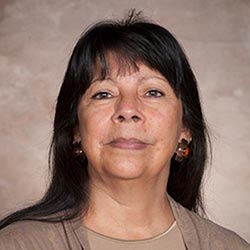Many discussions regarding the Native American Graves and Repatriation Protection Act (NAGPRA) are popping up all over the country. Now, with the increase of approved corporate fracking and pipelines, we will continue to see increases and changes in climate and an increase in natural disasters such as excessive rains/landslides, tornados and frigid storms. Many of these natural disasters also uncover human remains and burial artifacts in lands traditionally held by Indigenous peoples.

After reflecting on some of the concerns regarding human remains, and burial artifacts, including the unidentified human remains and cultural artifacts, I have come to the conclusion that these issues need to be open to all Indigenous peoples and not just state, federal and tribal governments. Among Indigenous peoples in various parts of the United States there are traditional governments who have never been included any discussion regarding NAGPRA and yet many of these councils could very well lead to the identification to many of these remains.
We live at a time where instant access for information is readily available, including obscure information that was, in many cases, privileged information. At the heart of NAGPRA’s mission is the task to establish cultural affiliation of tribal remains utilizing NAGPRA’s regulations that have been set forth for the purpose of disposition; with that I propose that other factors need to be taken into consideration. In the process of seeking, interpreting and applying indigenous knowledge for disposition and reburial, bioregional and genealogical groundwork needs to be established.
Factors to be taken into consideration:
• Historical conquest of the region
• Racial disenfranchisement
• Institutional equity
• Federal, state, tribal law, and traditional governments.
Historically, most native groups were forced to identify by the identity that was established for them by various colonial governments. Another result of being racially disenfranchised is many tribal nations have had to re-name their nations to reflect their natural language thus altering how one generation identified in relationship to indigenous knowledge. Unfortunately, many federally recognized people have accepted the idea that if you are not recognized by a federal, state or tribal government, than you are not indigenous. This type of attitude puts a tremendous burden on the racially disenfranchised, NAGPRA and any other institution that is obligated to protect indigenous peoples.
Among those indigenous groups were tribes who have been denied any form of recognition because of governmental policies made at a specific of time that protected the interests of the American historical narrative without regard to how indigenous groups identified themselves. These concerns, and the concerns regarding the survivors of captivity among indigenous tribal groups, have surfaced and today NAGPRA and other federal, state and tribal governments must look at how the genetic inheritance of these groups will surely change the face and landscape of what has been historically claimed by those governments, historians and numerous policymakers.
As we work through the cultural affiliation of human remains as governments, citizens, descendants, educators, scientists, historians and scholars, we must remember that historically most institutions did not represent racial groups equitably. What this means for NAGPRA in regards to human remains is that typically a non-native scientist or others spoke on behalf of Indigenous people. Today, we know the work involving Indigenous people is more accurate when they speak for themselves. Thus the work regarding social justice and the resources and information it may bring could be fairly new for NAGPRA and other government offices who have laid the groundwork that just does not answer all of the questions regarding cultural affiliation of human remains, dispositions and re-interment. This is not to say that Native American Graves and Repatriation Protection Act and certain of the act’s are not adequate, it is implying that NAGPRA should honor all Indigenous people and expand its communication.
Federal, state, tribal laws and traditional governments regarding indigenous people in the United States have been advanced by the United Nations Declarations on the Rights of Indigenous Peoples. As citizens of the U.S., we have a responsibility to ensure that all Indigenous people are treated fairly, equitably and reasonably regarding laws provided by each government to protect their best interests. This means that with or without any recognition, traditional Indigenous groups should be encouraged to work with NAGPRA and other agencies who are directly involved with transfer control of funerary objects associated with culturally unidentifiable human remains.
Since non-federally recognized, traditional governments and nations do not receive the Federal Register or any other federally recognized proprietary information, then NAGPRA will need to establish a policy that identifies the way they expect to reach out to all Indigenous groups that is inclusive.
Did you know?
Michael Lane, instructor of Indigenous Studies at BSU, will be discussing NAGPRA and its implications regarding state, federal, tribal law and traditional governments at 3 p.m. Wednesday, March 22, at the American Indian Resource Center on the BSU campus.
